|
2012. február 10-17.
Moszkva -
Moscow
|
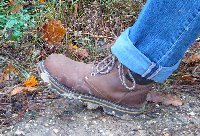
HIKING PAGE
|

MAIN
PAGE
|
|
Click
to any of the pictures - Kattints bármelyik képre
|
 |  |  |  |
 | Kirándulásom helyszínei Moszkva térképén
The spots of my trip on Moscow map | | |
 |  |  |  |
7. Kolomenszkoje Skanzen Dél-Moszkvában
Kolomenskoye Open-air Museum in South Moscow
|
 |  |  |  |
7.a.
Reggel kis kitérőt tettem és Metróval a Sabolovka állomásra mentem.
Amint a mozgólépcsőn felértem, ezt az érdekes ipari műemléket láttam
ott: a Sukov rádió adótornyot. Ez a mérnöki remekmű nagyon lenyűgöző látvány !
7.a. In the morning I made a side-trip and went to see by Metro (to Shabolovka Station) the Shukov Radio Broadcasting Tower. This masterpiece of engineering is really very impressive ! |
 |  |  |  |
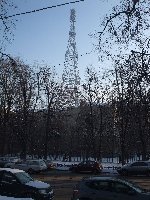 | 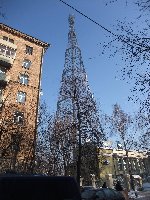 | 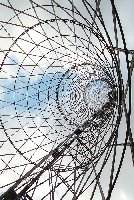 | 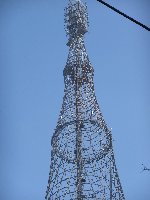 |
| 7.1. A Sukov rádió adótornyot Vlagyimir Sukov tervezte. - The Shukhov broadcasting radio tower was designed by Vladimir Shukhov. | 7.2. A 160 m magas szabadon álló acél torony 1920-22 között épült az Orosz Polgárháború idejében. - The 160-metre-high free-standing steel structure was built betwwen 1920–1922, during the Russian Civil War. | 6.3. A hiperbolid szerkezetnek köszönhetően a torony a nagyobb szelet is jól bírja. - Due to its hyperboloid structure the tower is resistive against wind load. | 6.4. A tornyot le akarják bontani, és az UNESCO "Veszéleyztetett épületek listáján" szerepel, megmentéséért kampány folyik. - It is planned to demolish the tower, but there is a campany to save it, and it is on UNESCO's "Endangered Buildings" list. |
 |  |  |  |
7.b. Kolomenszkoje Skanzen Dél-Moszkvában
7.b. Kolomenskoye Open-air Museum in South Moscow |
Kolomenszkoje
egykor cári birtok volt, és Moszkva déli részén van. A 390 hektárnyi
terület a Moszkva folyó festői dombos partvidékén helyezkedik el.
Kolomenszkoje települést a Kolomena városból a tatárok elől menekülő
emberek alapították a 14. században. Később III. Vaszilij uralkodása
alatt cári birtokká vált, de igaz virágkora Alekszij Mihajlovics
Romanov cár uralkodása alatt volt.
Kolomenskoye
is a former royal estate situated in South Moscow. The 390 hectare
scenic area is on the hilly banks of the Moskva River. Kolomenskoje
settlement was established by refugees, running away from town Kolomna
from the Tatar attacks. Later the settlement became a tsar estate,
under the reign of Tsar III Vasiliy, but its flourishing perid
was under the reign of Alexei Mikhailovich Romanov. |
 |  |  |  |
 | 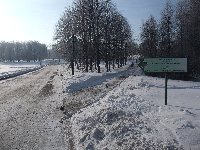 | 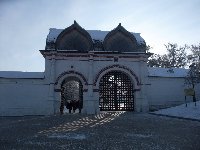 | 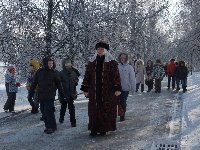 |
7.5. Egy iskolás csoportot követtem a Metrótól a főkapuig, ahol megláttam ezt a térképet. - I followed a children group to find the main gate where I saw this map.
| 7.6. A hatalmas parkban sokáig mentem ilyn úton. - In the huge park I walked for a while. | 7.7. Odaértem egy másik kapuhoz. - Then I reached another gate. | 7.8. Jöttek az iskolások, régu ruhába öltözött vezetővel. - A lady in traditional costume guided the children group. |
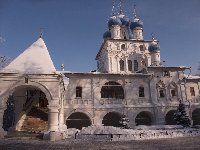 | 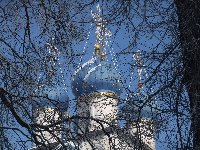 | 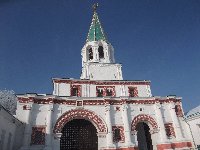 | 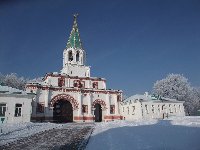 |
7.9.-7.10. Kazáni Isten anyja templom
A kőtemplom 1649-1653 között épült Alekszej Mihájlovics cár kívánságára, Kazan elfoglalásának 100. évfordulójára. -
Kazanski Church of God's Mother
The stone church was built (1649-1653) by Tsar Alexei Mikhailovich in honor of the 100th anniversary of the occupation of Kazan. | 7.11.-7-12. A Nagykapu. A díszes bejáratot a cári birtokra Alekszej Mihájlovics cár építtette. A kapu négy szintből áll: az alsó kapu, felette egy folyosós
rész, amelyben orgona működött és oroszlán ordítás hangját adta ki,
afelett volt egy óraszerkezet, és végül a harangtorony.- The Front Gate was built by Tsar Alexei Mikhailovich as an entrance of the tsar estate. The front gate has four levels: the entrance gate, on the second level
a building with an organ, which played "lion roar", on the third level
a clock-mechanism, and on the top the bell tower.
|
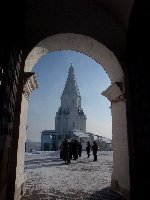 | 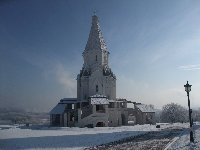 | 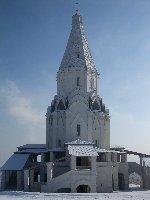 | 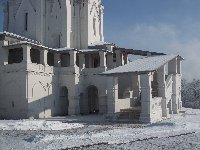 |
7.13.-7.14.-7.15.-7.16. A mennybemenetel temploma.
Az 1532-ben felszentelt templomot III. Vaszilij moszkvai nagyfejedelem
építtette fia, a régóta várt trónörökös – a későbbi Rettegett Iván –
születésének emlékére. A templom építészeti szempontból újfajta
konstrukció: a hagyományos fatető-szerkezet és a kőépítészet
kombinációja. Ez az új stílus az orosz egyházi építészetre nagy
hatással volt. 1994 óta a templom az UNESCO Világörökség Listáján
van. -
Church of the Ascension. The
church - completed in 1532 - was built by III Vasiliy Grand Duke of
Moscow, to celebrate the birth of his son, the later Ivan the Dreadful.
The church is one of the earliest examples of a traditional wooden tent-roofed church on a stone and brick substructure. It had a great influence on the development of Russian ecclesiastical architecture. Since 1994 the Church is on UNESCO World Heritage List. |
 |
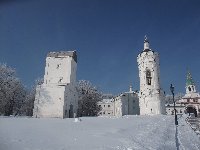 |
 |
 |
| 7.17. A táj ilyen szép havas volt- - The landscape was nice snowy. |
7.18. Víztorony (17.szd.) és harangtorony (16.szd.) - Water tower (17th cent.) and bell tower (16th cent.) |
7.19.-7.20. A sziporkázó napsütésben és a fehér hóban varázslatosan néztek ki a régi épületek. - The bright sunshine and the white snow made the view more magical. |
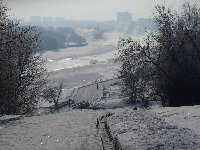 | 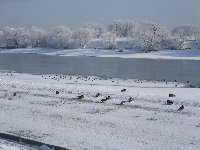 | 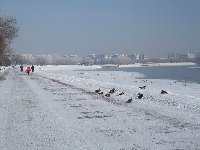 | 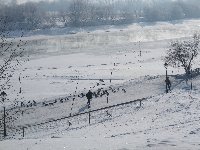 |
| 7.21. Egyszercsak megláttam a Moszkva folyót - Suddenly I glanced river Moscow | 7.22.-7.23.-7.24.
A folyó két befagyott szélén vadkacsák gubbasztottak. A folyó közepe
nem volt jeges, és még gőzölgött is. A parton volt néhny sétáló. -
The esge of the river was frozen, and wild ducks were sitting on the
ice. The middle part was not icy, and in some places it steamed. On the
riverside few people were walking. |
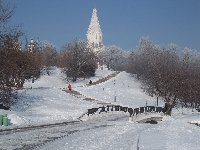 | 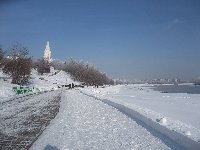 | 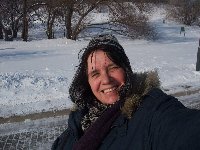 | 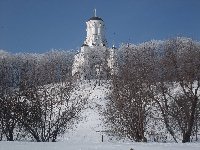 |
| 7.25. Bájos látvány - Charming view | 7.26. A városi házak nagyon távol vannak - The city can be seen in the distance | 7.27. A pára a hajamra fagyott a -14 fokban, mégsem fáztam. - The frozen humidity made my hair white, but I felt no cold | 7.28. Jobb oldalon egy kis dombtetői templom. - On my righ side a small hilltop church. |
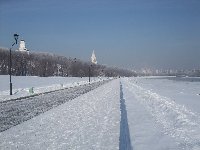 | 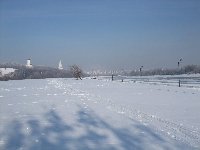 | 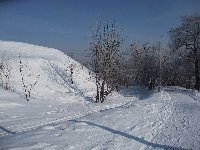 | 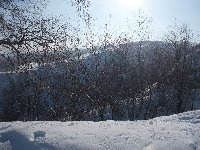 |
7.29. Sokat gyalogoltam, de még nem látszott a cári fapalota. -
I walked a lot but still did not observe the tsar's wooden palace. | 7.30. A főútról letértem jobbra egy ösvényre. -
From the main road I turned to the right, to a smaller trail. | 7.31. Felfelé haladtam. -
I went uphills. | 7.32. Dombok között mentem. -
I walked among hills. |
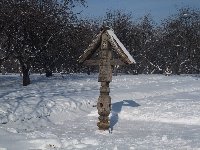 | 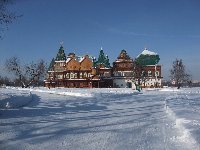 | 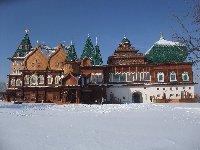 | 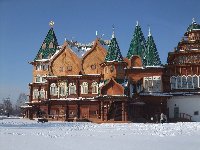 |
7.33. Elesett hősök emlékére. -
Memory of victims | 7.34. És lám! Itt a cári fapalota. -
And finally! Here is the tsar's wooden palace | 7.35.-7.36. Alekszij Mihajlovics Romanov cár 1667-1668 között csodás palotát építtetett itt fából, amelyben 270 szoba volt.
- In the 1667-1668 years Tsar Alexei Mikhailovich Romanov built a magnificent wooden palace which had 270 rooms. |
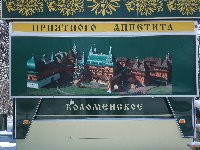 | 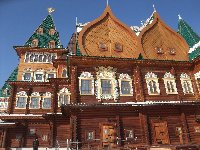 | 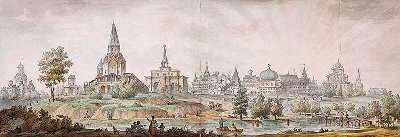
|
7.37.-7.38. Az egykori palota elpusztult, és az elmúlt években készült rekonstrukció csak tized akkora mint az eredeti volt. -
The
original palace decayed and nothing left. This palace is a
reconstruction, built in the lately years, and regarding the size, its
about onetenth of the original palace. | 7.39. A cári fapalota egykor a többi épület közelében helyezkedett el. Az új másolat jóval távolabb épült fel. -
The original wwoden palace was close to the other buildings. The reconstructed palace was built up more far away. |
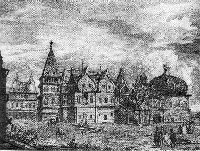 | 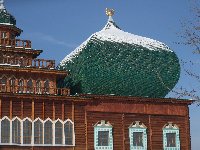 | 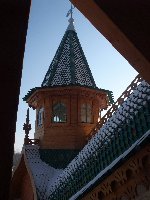 | 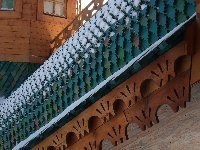 |
7.40. Egy régi kép az egykori palotáról. -
An old picture about the original palace. | 7.41.-7.42.-7.43. A tetőszerkezet tervezése és konstrukciója bámulatra méltó. -
The design and construction of the roof is amazing. |
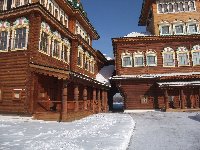 | 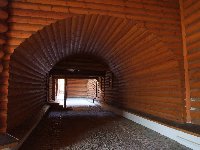 | 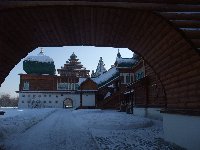 | 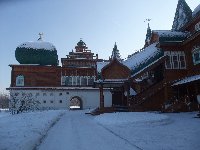 |
7.44. A cári család minden tagjának, még a gyerekeknek is, külön saját palotarésze volt. -
Each member of the tsar's family, even the childrenm had separated own palce. | 7.45.-7.46. A palotaszárnyakat boltívek, alagútak kötötték össze. -
The palaces were connected by arches and tunnels. | 7.47. Ez a cárnő bejárata volt. -
This was the entrance of the tsarina. |
 | 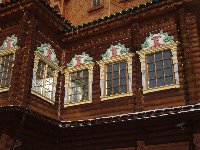 | 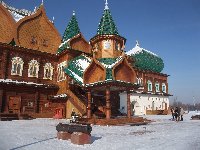 | 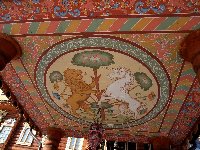 |
7.48. Még a lépcső mennyezet is díszes volt. -
Even the ceiling of the stair-passage was higly decorated. | 7.49. Ablakok -
Windows | 7.50. Itt pedig a cár ment be, és én is, miután megvettem 370 Rubelért a fotós-jegyet. -
And this was where the tsar entered the palace,... and so did I after having bought the photo-ticket for 370 Rubles. | 7.51. A bejárat mennyezete -
The ceiling of the entrance |
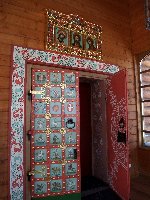 | 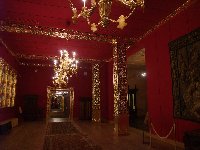 | 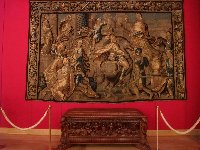 | 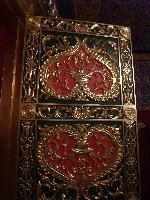 |
| 7.52. A cár palotájának bejárati ajtaja - The centrance door of the tsar's palace | 7.53. Díszes termek - Decorated rooms | 7.54. Bútor és faliszőnyeg - Furniture and wall-carpet | 7.55. Egy szobaaajtó - Another door |
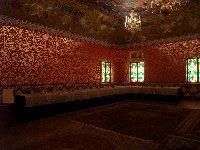 | 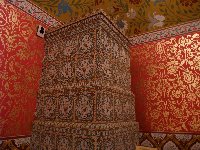 | 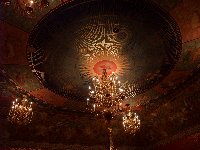 | 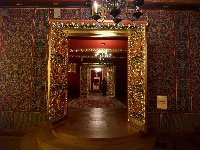 |
| 7.56. Ebédlő - Dining room | 7.57. Cserépkályha - Ceramic stove | 7.58. Mennyezet - Ceiling | 7.59. További szobák - Further rooms |
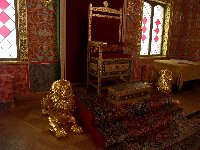 | 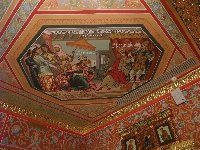 | 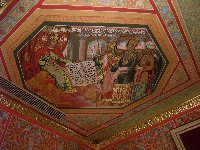 | 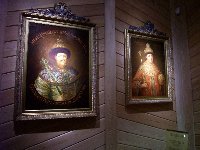 |
| 7.60. Trón - Throne | 7.61. Mennyezet - Ceiling | 7.62. Mennyezet - Ceiling | 7.63. Alekszej Mihájlovics Romanov cár arcképe - Portrait of Tsar Alexei Mikhailovich Rommanov |
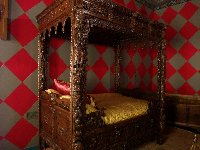 | 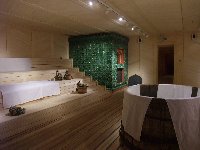 | 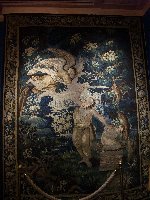 | 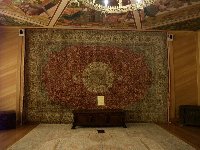 |
| 7.64. Cári fekhely - The tsar's bed | 7.65. A cár szaunázó terme - The tsar's sauna room | 7.66. Faliszőnyeg: Ábrahám, Izsák és az angyal - Wall carpet: Abraham, Isaac and the angel | 7.67. Régi szőnyeg - Old carpet |
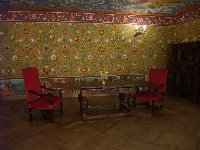 | 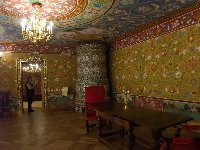 | 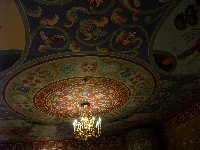 | 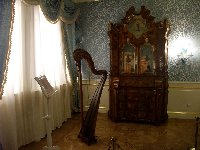 |
| 7.68. Fogadószoba - Protocol room | 7.69. Tárgyalószoba - Meeting room | 7.70. Mennyezet - Ceiling | 7.71. Zeneszoba - Music room |
 | 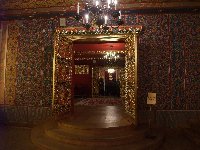 | 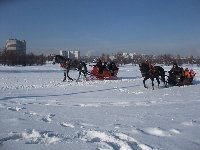 | 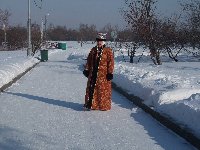 |
| 7.72. A kétfejű sas, a cárok szimbóluma - The two-headed eagle, the symbol of tsars | 7.73. Díszes termek - Decorated rooms | 7.74. Lovas szánkó - Horse pulled sleigh | 7.75. A múzeum egyik munkatársa - A lady from the musum's staff |
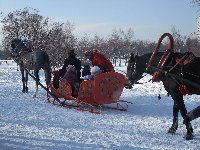 | 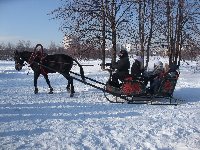 | 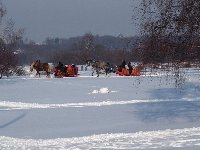 | 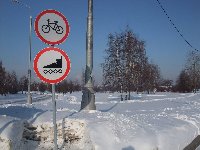 |
| 7.76. Lovas szánkó - Horse pulled sleigh | 7.77. Lovas szánkó - Horse pulled sleigh | 7.78. Lovas szánkó - Horse pulled sleigh | 7.79. És ami tilos... - And what is prohibited... |
 |  |  |  |
7.c. Ismét a városban
7.c. Back to the town |
 |  |  |  |
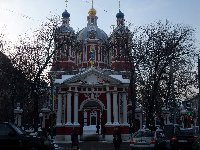 | 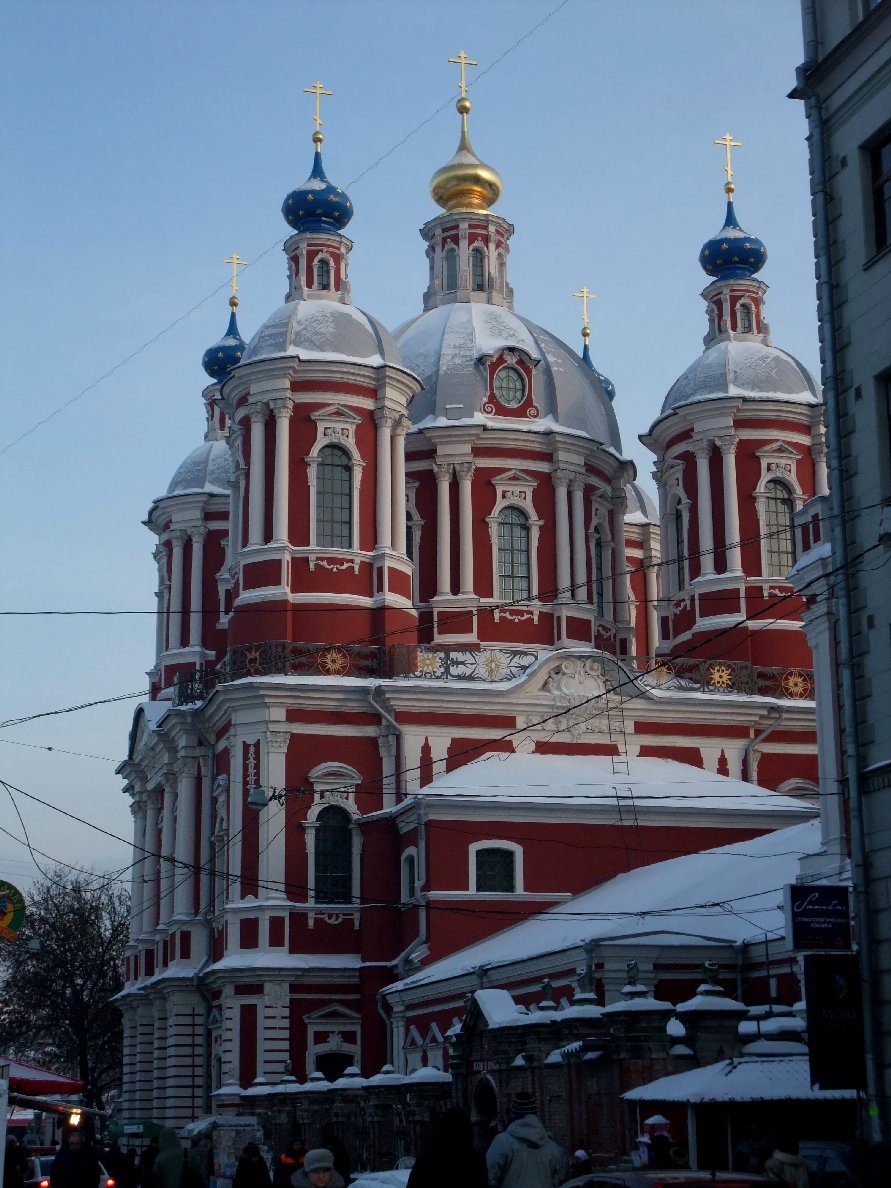 | 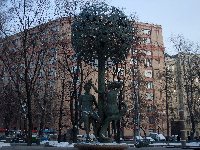 | 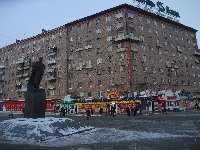 |
| 7.80.-7.81. Egy templom a Tretyakovszkaja metróállomás közelében - A curch near Tretjakovskaya metro station | 7.82. Ádám és Éva a Novokuznyeckaja metróállomásnál - Adam and Eve near the Novokuznjetzkaya metro station | 7.83. Lenin szobor és a kisközért (ahol vásárolni szoktunk), a Komszomolszkaja metróállomásnál - Lenin and our food store (where we buy every day) close to Komsomolskaya metro station |
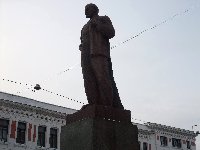 | | | |
| 7.84. Lenin szobor a Komszomolszkaja metróállomásnál - Lenin statue close to Momsomolskaya metro station | | | |



















































































































